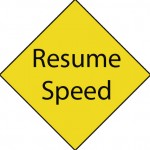As the increase of projected Major Capital Projects for 2017-18 emerge with all its implications troubled projects are a likely result. LABOR OVERRUNS are a typical component in troubled projects.
LABOR OVERRUNS – impact several project baselines. Cost, Schedule and Progress are at risk.
LABOR OVERRUNS – Labor Overruns are a major risk in any project with a significant labor component.
LABOR OVERRUNS – Early detection, correction and management require use of proper KPI’s.
LABOR OVERRUNS – Use of thoughtful KPI’s facilitate early/proactive corrective action.
LABOR OVERRUNS – Labor Shortages in 2017 and beyond will lead to upward pressure in labor rates.
LABOR OVERRUNS – Labor shortages in 2017 and beyond will lead a man-hour overruns (poor productivity).
McLaughlin & McLaughlin has assisted numerous troubled Major Capital Projects successfully over the years by providing cost effective business solutions and recovery plans.
It is important to note that McLaughlin and McLaughlin Project and Dispute Consulting LLC [M&M] is not a law firm and is not intending to provide legal advice. M&M is a consulting firm providing (among other services) non-legal expertise in construction claims, dispute resolution and litigation support. For further information on M&M services, please see www.McLaughlinandMcLaughlin.com.








